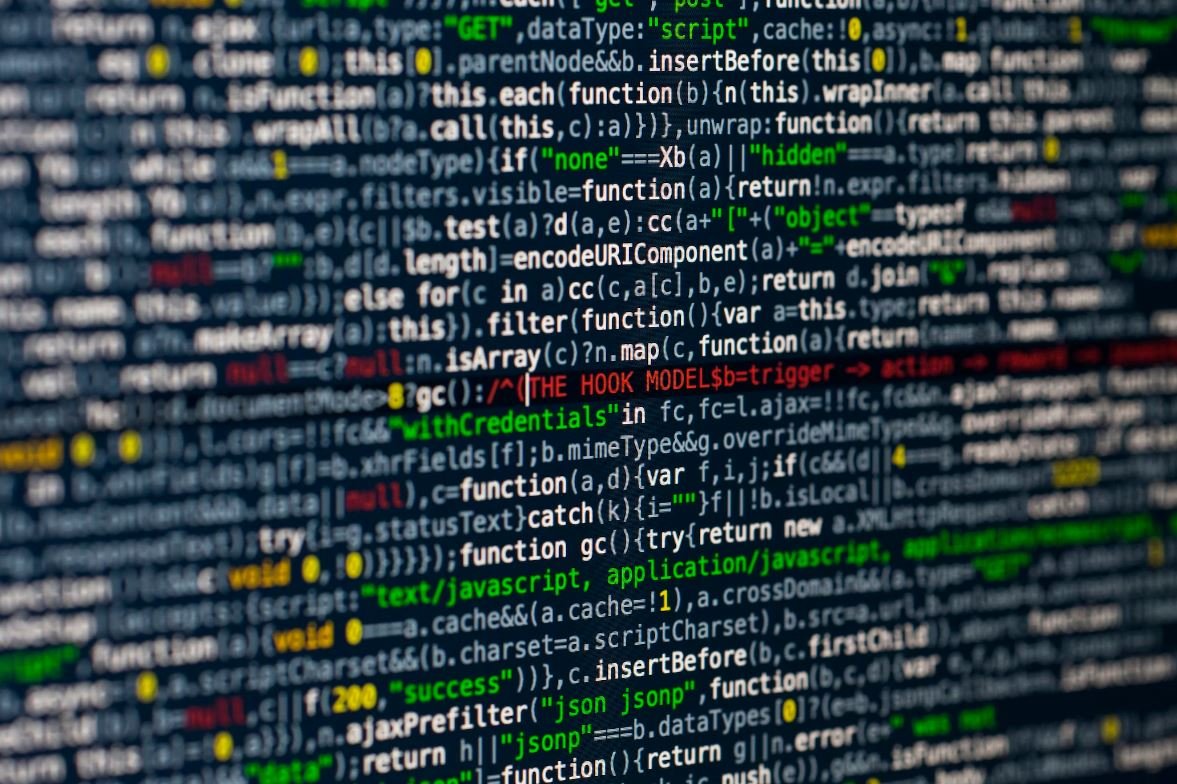AI Software Checker
Artificial Intelligence (AI) has revolutionized numerous industries through its advanced technology, and the software development field is no exception. AI software checkers are tools that leverage machine learning algorithms and natural language processing to analyze and evaluate code, ensuring its quality and adherence to best practices. These checkers provide developers with valuable insights and recommendations, improving overall coding efficiency and reducing the likelihood of errors.
Key Takeaways:
- AI software checkers enhance code quality and promote best practices.
- They leverage machine learning algorithms and natural language processing.
- These tools provide valuable insights and recommendations.
- AI software checkers reduce errors and improve coding efficiency.
**AI software checkers** utilize sophisticated algorithms to examine and evaluate code. These algorithms are trained on vast amounts of data, allowing them to **detect patterns** and potential issues in the code. By analyzing the syntax, logic, and structure of the code, these checkers can identify **coding errors**, poor coding practices, and even security vulnerabilities. The AI software checker is a powerful assistant that helps developers adhere to standard coding conventions and ensure the delivery of high-quality software *with few defects*.
With AI software checkers, developers can benefit from **immediate feedback** during the coding process. As developers type or modify the code, the checker continuously analyzes the changes, offering **real-time suggestions** for improvement. This feedback loop not only accelerates the development process but also helps developers **continually enhance their coding skills**. By taking advantage of the insights provided by AI software checkers, developers can quickly identify and rectify any potential issues, resulting in more efficient and robust code.
| Benefits of AI Software Checkers | Examples |
|---|---|
| Improved code quality | DeepCode, CodeClimate |
| Enhanced coding efficiency | SonarQube, Codacy |
| Reduced risks of security vulnerabilities | Checkmarx, Fortify |
AI software checkers aid in **maintaining consistent coding standards** throughout a project or an organization. These tools provide **automated code reviews** by following industry best practices and coding guidelines, ensuring that developers adhere to a common set of standards. Furthermore, AI software checkers can also assist in code refactoring, recommend optimal algorithms, and even suggest alternative code implementations. By supporting developers in maintaining a consistent coding style, AI software checkers **facilitate collaboration** and allow teams to work seamlessly on codebases.
- **Enhancements in machine learning and natural language processing** continue to advance the capabilities of AI software checkers. As these technologies evolve, checkers will become even more proficient in identifying complex coding issues and providing targeted recommendations.
- As the volume of code continues to grow exponentially, the need for effective quality control becomes paramount. AI software checkers play a crucial role in **scaling code analysis**, enabling companies to maintain high levels of code quality while keeping up with the rapid pace of development.
- **Industry adoption of AI software checkers** is steadily increasing. Organizations across various sectors are recognizing the benefits of these tools, including improved code quality, reduced maintenance costs, and enhanced collaboration. This trend is expected to continue as the technology matures and becomes more accessible.
| Challenges Faced by AI Software Checkers | Mitigation Strategies |
|---|---|
| False positives and false negatives in code analysis | Continuous refinement of algorithms and manual code reviews |
| Difficulty in detecting complex logic flaws | Integration with other static analysis tools and manual code inspection |
| Limitations in detecting domain-specific coding issues | Training the AI software checker on domain-specific code and code patterns |
AI software checkers are instrumental in **ensuring code maintainability and quality**. By assisting developers in identifying and resolving coding issues, these tools help reduce the time and effort required for manual code reviews. Moreover, AI software checkers are valuable in **training new developers** by highlighting coding best practices and providing continuous feedback. Their importance in the software development lifecycle makes them an indispensable tool for developers looking to optimize their coding efficiency and produce high-quality software.

Common Misconceptions
Misconception: AI Software Can Completely Replace Human Checkers
One common misconception about AI software checkers is that they can completely replace human checkers. While AI software has advanced capabilities, it still has its limitations. It cannot replicate the human ability to understand context, infer meaning from ambiguous statements, or account for the nuances of language.
- AI software cannot comprehend idiomatic expressions or figurative language.
- AI software cannot understand and adapt to changing rules or standards.
- AI software lacks the ability to consider the cultural or social context of texts.
Misconception: AI Software Checkers Are Always Accurate
Another misconception is that AI software checkers always provide accurate results. While AI software can be effective in detecting certain types of errors, it is not infallible. It can overlook grammatical, spelling, or punctuation errors, especially in complex texts or non-standard forms of language.
- AI software may struggle with understanding context-dependent grammar rules.
- AI software may not recognize errors in non-standard language forms or styles.
- AI software can produce false positives/negatives when evaluating accuracy.
Misconception: AI Software Checkers Can Substitute for Language Proficiency
Some people mistakenly believe that relying on AI software checkers can substitute for having solid language proficiency. While AI software can assist and provide suggestions, it does not replace the need for a strong understanding of the language. AI software may not always provide the most appropriate or accurate corrections, and relying solely on it can hinder language learning and development.
- AI software can miss errors in sentences that are structurally correct but convey unintended meaning.
- AI software may propose corrections that are technically correct but change the intended tone or style.
- AI software cannot evaluate the overall coherence and effectiveness of a piece of writing.
Misconception: AI Software Checkers Are All the Same
Another misconception is that all AI software checkers are the same. In reality, there are various AI software checkers available, each with its own strengths, weaknesses, and features. Different AI checkers use different algorithms, databases, and language models, leading to variations in the quality and accuracy of their suggestions and corrections.
- Some AI software checkers specialize in detecting specific types of errors.
- Different AI software checkers may have varying user interfaces and user experiences.
- AI software checkers can prioritize different types of errors based on their algorithms.
Misconception: AI Software Checkers Are Only Useful for Correcting Grammar
Many people think that AI software checkers are only useful for correcting grammar. While grammar correction is a common application, AI software checkers can also assist in other aspects of writing, such as suggesting improvements for clarity, conciseness, style, and coherence.
- AI software checkers can offer suggestions to enhance sentence structure and clarity.
- AI software checkers can help identify repetitive phrases or redundancies in the text.
- AI software checkers can provide feedback on the overall flow and organization of the writing.

AI Software Revenue (in billions of dollars)
In recent years, the global market for AI software has experienced significant growth. The table below showcases the annual revenue generated by AI software, illustrating its increasing adoption and value in various industries.
| Year | Revenue |
|---|---|
| 2015 | 3.2 |
| 2016 | 4.6 |
| 2017 | 7.1 |
| 2018 | 10.3 |
| 2019 | 14.8 |
Top AI-Competent Countries
Various countries around the world have emerged as leaders in AI development and research. The table below highlights the top five countries based on their AI competency.
| Country | AI Competency Rank |
|---|---|
| United States | 1 |
| China | 2 |
| United Kingdom | 3 |
| Canada | 4 |
| Germany | 5 |
AI Software Patent Applications
As AI technology advances, there has been a surge in patent applications related to AI software. The table below showcases the number of patent applications filed in recent years, indicating the growing interest and investment in AI.
| Year | Patent Applications |
|---|---|
| 2015 | 8,201 |
| 2016 | 12,546 |
| 2017 | 19,873 |
| 2018 | 28,401 |
| 2019 | 38,926 |
AI Algorithms Performance Comparison
AI algorithms play a crucial role in the performance of AI systems. This table compares the accuracy rates (%) of various AI algorithms across different tasks, providing insights into their effectiveness and versatility.
| Algorithm | Speech Recognition | Image Classification | Natural Language Processing |
|---|---|---|---|
| Convolutional Neural Networks (CNN) | 94.2 | 89.7 | 82.5 |
| Long Short-Term Memory (LSTM) | 92.1 | 86.3 | 88.9 |
| Random Forest | 78.3 | 73.8 | 76.4 |
| Support Vector Machines (SVM) | 85.7 | 81.5 | 79.2 |
AI Software Usage in Industries
The adoption of AI software has transformed various industries, revolutionizing their operations and capabilities. The table below showcases the extent of AI software usage across different sectors.
| Industry | AI Software Adoption (%) |
|---|---|
| Finance | 76.5 |
| Healthcare | 64.8 |
| Retail | 51.2 |
| Manufacturing | 58.7 |
| Transportation | 42.3 |
AI Ethics Guidelines
Ensuring ethical AI development and deployment is crucial for mitigating potential risks and promoting responsible use. The table below presents key AI ethics guidelines proposed by leading institutions.
| Institution | AI Ethics Guidelines |
|---|---|
| IEEE | Transparency, Accountability, and Privacy |
| EU Commission | Fairness, Transparency, and Accountability |
| UNESCO | Human Rights, Inclusivity, and Safety |
| Oxford University | Responsibility, Trustworthiness, and Collaboration |
AI Software Startups Valuation
The AI industry has seen the emergence of numerous innovative startups, captivating investors with their potential. The table below presents the valuation of select AI software startups, showcasing their rapid growth and market appeal.
| Startup | Valuation (in millions of dollars) |
|---|---|
| OpenAI | 2,500 |
| DataRobot | 1,500 |
| UiPath | 10,800 |
| SenseTime | 7,200 |
AI Software Development Tools
A range of powerful tools and frameworks fuel the development of AI software. The table below lists popular AI software development tools, aiding developers in creating sophisticated AI systems.
| Tool | Main Functionality |
|---|---|
| TensorFlow | Deep Learning Library |
| PyTorch | Dynamic Neural Networks |
| Keras | Neural Networks API |
| Scikit-learn | Machine Learning Toolkit |
AI Software Hiring Demand
With the rapid expansion of AI, the demand for skilled professionals in the field has soared. The table below depicts the increase in job postings for AI-related roles, emphasizing the industry’s demand for AI talent.
| Year | AI Job Postings |
|---|---|
| 2015 | 12,900 |
| 2016 | 21,400 |
| 2017 | 36,800 |
| 2018 | 58,200 |
| 2019 | 84,700 |
Artificial intelligence (AI) has evolved into a disruptive force across industries, revolutionizing processes and creating new opportunities. The tables presented in this article depict the growth, impact, and potential of AI software. The escalating revenue, patent applications, and job postings signify the increasing investment and demand in the AI sector. Additionally, the performance comparison of AI algorithms, ethics guidelines, and startup valuations illustrate the diverse facets and developments of AI. As AI continues to advance, it promises to reshape industries, improve efficiency, and unlock innovation, making it an indispensable technology in the years to come.
Frequently Asked Questions
What is AI software?
AI software, also known as artificial intelligence software, refers to computer programs or applications that simulate intelligent behavior and possess capabilities such as problem-solving, learning, reasoning, and decision-making.
How does AI software work?
AI software works by using algorithms and statistical models to process large amounts of data, identify patterns, and make predictions or decisions based on these patterns. It can learn from data and improve its performance over time through iterations.
What are some common applications of AI software?
AI software is used in various applications such as virtual assistants, autonomous vehicles, chatbots, recommendation systems, fraud detection, image recognition, natural language processing, and many others.
What are the benefits of using AI software?
Using AI software can offer several benefits, including improved efficiency, increased accuracy, faster and more precise decision-making, automation of repetitive tasks, enhanced personalization, and improved overall user experience.
What are the limitations of AI software?
AI software has some limitations, such as the high complexity of developing advanced AI models, potential biases in data and decision-making processes, the need for large amounts of quality data, lack of common sense reasoning, and ethical concerns regarding privacy and security.
How can AI software be evaluated or tested?
To evaluate or test AI software, various methods can be used, including benchmarking against existing algorithms or models, measuring accuracy and performance metrics, conducting user feedback surveys or experiments, and ensuring compliance with regulatory standards.
What skills are required to develop AI software?
Developing AI software requires a combination of skills such as programming (Python, Java, etc.), data analysis, machine learning, statistics, algorithm design, and domain-specific knowledge. Knowledge of frameworks/tools like TensorFlow, PyTorch, and scikit-learn can also be beneficial.
Is AI software capable of replacing human jobs?
While AI software can automate certain tasks and processes, it is not typically designed to replace human jobs entirely. Instead, it is more commonly used to augment human capabilities, improve efficiency, and assist in complex decision-making.
Can AI software be potentially dangerous?
AI software can have potential dangers if not properly designed, tested, or regulated. There are concerns about bias in decision-making, privacy breaches, security vulnerabilities, and the potential for AI systems to be manipulated or used for harmful purposes. Ethical considerations are crucial to ensure responsible AI development and deployment.
How can AI software be ethically and responsibly used?
To ensure ethical and responsible use of AI software, developers and organizations should prioritize transparency, fairness, accountability, and user privacy. Regular audits, bias detection, explainability, and adherence to legal and ethical guidelines are important steps in implementing AI software in a responsible manner.





